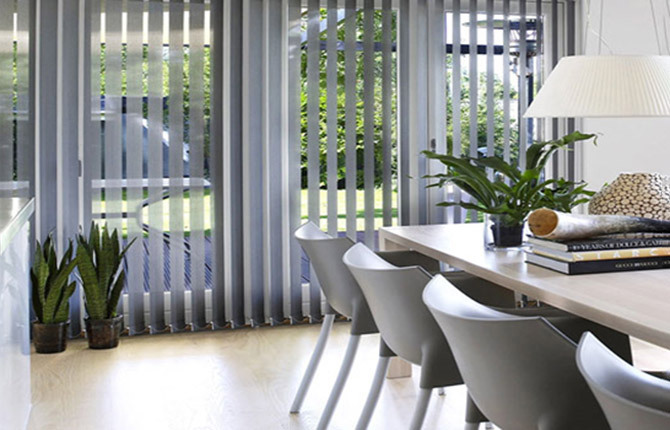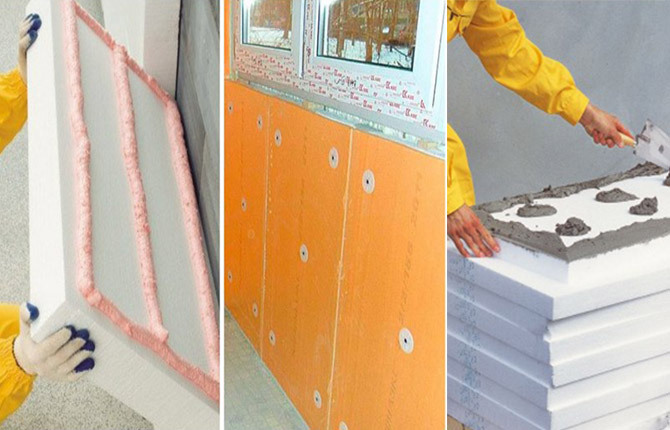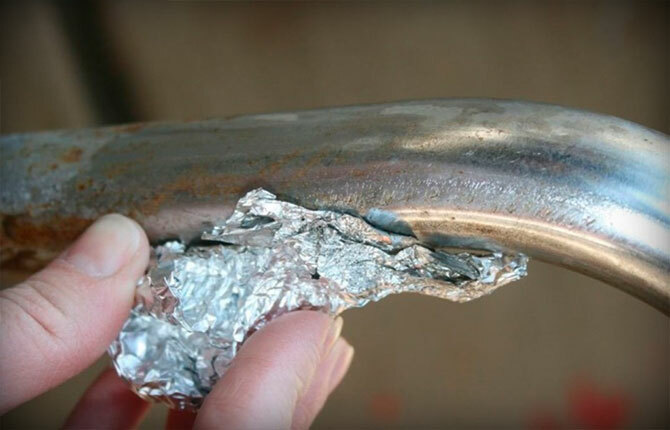To decorate a window opening in a private house, apartment or office, vertical or horizontal blinds are increasingly used. They are popular because they differ from the usual curtains and curtains in their advantages: they do not need to be washed or adjusted often, they are practical and comfortable, and last much longer. That’s why blinds are a common choice for owners of plastic windows.
But it is still necessary to periodically wash metal blinds and wash fabric blinds. But this will be preceded by a preparatory stage - removing the structure from the plastic window. And for different models of blinds the technique will be different. Before removing the blinds from the window, you need to master the dismantling technology so as not to damage the fastenings. You can then remove any blinds for cleaning or washing without calling a cleaning company.
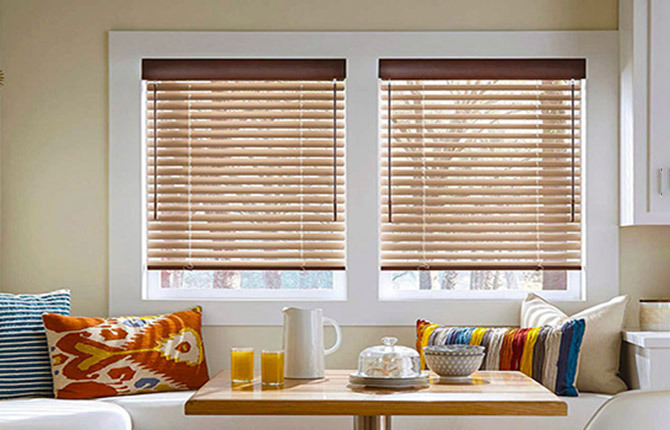
The content of the article:
- Why remove blinds
-
What you need to know before disassembling
- Types of curtains by design
- Types of curtains by material
- Differences by type of control
- How to remove vertical blinds
-
How to remove horizontal blinds
- Instructions for different types of fastening
-
Removing roller blinds
- Step-by-step removal instructions
- Removing cassette curtains
- Some useful tips
Why remove blinds
Blinds make life much easier. They look stylish, protect from sunlight, and do not require as frequent maintenance as the usual (but slightly outdated) curtains. This type required regular washing, ironing, and straightening. In addition, regular cleaning affects the appearance. Therefore, fabric curtains deteriorate and lose their beautiful appearance much faster than roller or aluminum blinds.
But this does not mean that such durable structures do not require maintenance. The owner of a house or apartment may need to remove the blinds from their mountings for the following reasons:
- Cleaning the structure from contamination. Any type of blinds has a function - protecting the room from dust, dirt, and debris from the street when the plastic window is open. And they cope with the task well (especially in city conditions). But dust that is in the apartment can also settle on them. Therefore, periodically you need to remove the blinds to wash them and remove dirt.
- Remove blinds to clean windows.Since the structure is usually firmly fixed in the window opening, simply moving it to get to the window is not difficult - it will still get in the way. On average, apartment owners wash their windows 5-10 times a year (depending on the region of residence and weather). Because you need to learn how to remove blinds installed in a window opening in your apartment or house in order to make your life and the window cleaning process easier.
- Breaking. It may be necessary to remove the blinds from the window due to the breakdown of one (several) elements or the entire structure. Although roller or metal blinds are durable (compared to fabric models), they can also break. They will need to be removed for repair or replacement.
- Moving.You can also remove blinds for a simple reason - people move from an apartment or house, taking their property with them.
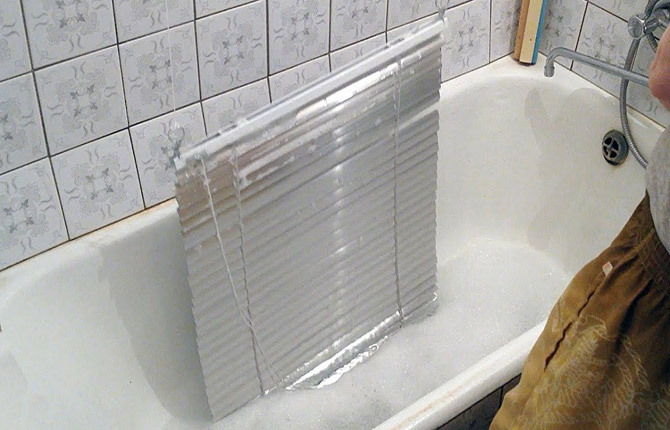
But whatever the reason for the need to remove the blinds from the window, the owner should carefully consider this by studying the dismantling technology. Otherwise, fasteners or other elements can easily be damaged. As a result, you will have to pay for repairs or buy new blinds.
What you need to know before disassembling
Blinds are a structure that consists of slats (plates) that are fastened together. A person can change their position in order to improve the microclimate in the room, separate air or heat flows, and adjust the level of lighting.
The design is not only comfortable and functional, but also performs a decorative function, complementing the interior, because the slats can be made in different colors and from different materials. Before you remove the blinds, you first need to know a few nuances - starting from the design and ending with the features of controlling it on the window.
Just for fun: How to adjust plastic windows yourself
Types of curtains by design
Depending on the design, blinds are divided into two types - horizontal and vertical. Each has its own characteristics.
Horizontal
Horizontal blinds are also called Venetian blinds. The slats in the structure are arranged vertically and connected to each other by cords. They allow a person to easily change the position of the elements, thereby controlling the light or air flow.
Lamels can be made of different materials:
- tree;
- aluminum;
- textile;
- bamboo and so on.
Horizontal blinds are mounted on a cornice. If the lamella panel is fully opened, it covers the window 100%, preventing light from entering. The width of the slats may vary depending on the material from which they are made. For example, if it is made of bamboo, then the width can reach up to 50 mm, while for aluminum the maximum size is 25 mm.
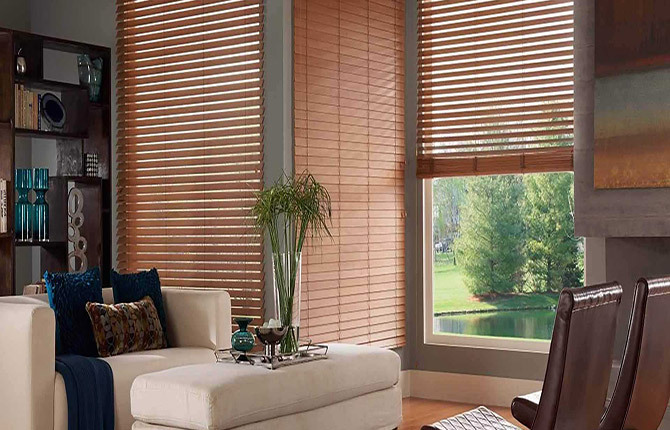
Types of horizontal blinds for windows:
- roll;
- Roman;
- pleated;
- day/night system.
Horizontal blinds can visually expand the room in which they are installed. But it is important not to make a mistake with the choice of material from which they will be made. This is a good choice for small rooms or offices.
Vertical
In this type of construction, the slats are mounted vertically. In this way they are similar to ordinary curtains or curtains. To prevent the lamellas from losing their shape, there is a special weighting material in their lower part. Here they are fastened together with a chain or cord.
The length of the slats can be different - either reaching the very window sill (covering it), or covering only part of the window. The cut can also be either straight or oblique.
The mechanism of vertical blinds allows a person to easily move the slats to the side, thereby opening the window, or rotate them around their axis to regulate the flow of light and air.
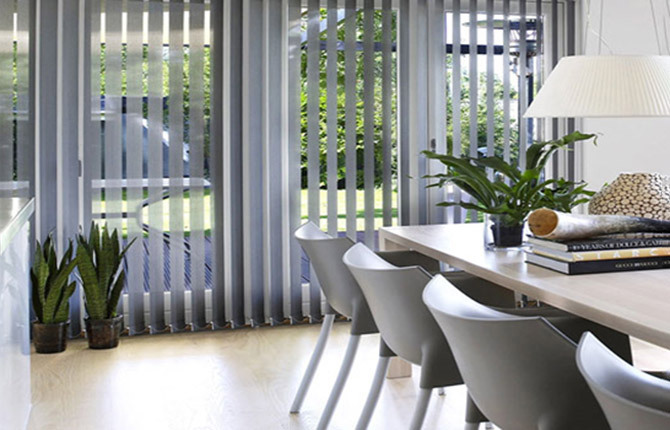
Vertical blinds can be made from:
- wood;
- fabrics;
- plastic;
- aluminum
An additional pattern can be applied to the lamellas. Vertical structures are most often used to visually increase the height of a room.
Types of curtains by material
Slats for blinds can be made of fabric, metal, plastic and wood. Each material has its own pros and cons that need to be taken into account when choosing the optimal design for your home or office.
The choice of material for blinds should be made taking into account the room in which the structure will be placed. It is best to install aluminum blinds in the kitchen. Plastic ones are also possible, but in this case the window should not be placed near the stove. For the living room, the best choice would be a wooden structure.
You can hang fabric blinds in the bedroom. But in rooms where the moisture level is high (shower room, bathroom), you should give preference to models made from plastic, since they have moisture-repellent properties, will not become unusable when exposed to them water, steam
Aluminum (metal)
The advantages of aluminum structures are strength and long service life. Both horizontal and vertical models are made from this material. The coating can be matte or glossy. The color range is quite wide.
Advantages of aluminum models:
- Able to withstand high temperatures. Therefore, they can be installed even near an open fire, a heating boiler, a radiator, not to mention a kitchen stove.
- Lungs. Despite the fact that fabric and plastic slats are lighter, aluminum slats are also lightweight.
- The sun's rays do not affect the color (do not fade).
- The wind from open windows does not disturb the shape of the product. Also, the blinds do not flutter like regular curtains.
- Strength. The lamellas do not burn, do not deteriorate, do not tear, do not break.
- Fire safety. The metal is not exposed to fire, which is very important.
- Easy care. It is enough to remove the aluminum blinds from the window and wash them with ordinary detergents.
- If you use and care for the structure correctly, it can last much longer than other types of blinds.
Minuses:
- The thermal conductivity of the metal is very high, so in the summer heat the slats can become very hot in the sun.
- If the wind is very strong, then when it gusts, the aluminum slats may knock against each other.
It is also worth noting that it is the metal models that meet the established sanitary and hygienic standards. requirements, therefore they are allowed to be installed even in medical institutions, restaurants, cafes and others similar zones.
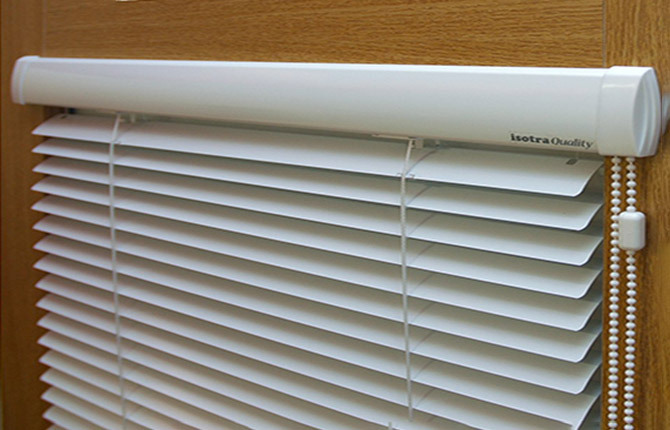
Plastic
The material for the production of plastic blinds for windows is PVC. Because they are cheaper, more practical, and can be painted in different colors. Since the price is low, it is possible to periodically replace a boring model with a new one, without compromising your budget.
Pros:
- A budget option.
- Plastic is hygienic.
- The color of the panels - they can be pastel shades, brighter ones, painted to resemble stone, wood, etc.
- Moisture resistance. Plastic models do not absorb liquids, so they can be used to close window openings in the bathroom, shower, even in the kitchen (but away from the stove).
- Can be combined with tulle curtains, curtains.
- Easy to remove from window for cleaning.
Minuses:
- The color of the lamellas gradually fades under the influence of sunlight.
- High temperatures are detrimental to plastic models. Even in summer, the sun's rays can cause disruption of the geometry of the lamellas. PVC structures are not suitable for rooms where there are fireplaces and radiators near windows.
- Fragility. The panels are easy to destroy, break, bend. Even animals can chew them.
Plastic models are universal. They are chosen for this. The canvases are suitable for offices and apartments. They are easy to maintain, so they will not cause any trouble to the owners.

Fabric
Production material – impregnated fabric. They are added so that the slats repel dirt, water, and dust. More often, manufacturers use fiberglass and polyester. Somewhat less commonly, linen, viscose, and cotton. This is a good option, since blinds are easy to clean, inexpensive and fit into different interior styles.
Pros:
- A light weight. Removing such blinds from the window will not be a problem.
- Easy care due to the presence of dirt-repellent impregnations in the fabrics.
- Will fit well into any home.
Minuses:
- Less durable than models made of metal, plastic or wood.
- If there is a strong wind, the canvases may flutter, which not everyone likes.
- The color range is not as wide as that of plastic models.
Fabric blinds are suitable for windows in the studio, bedroom, living room.
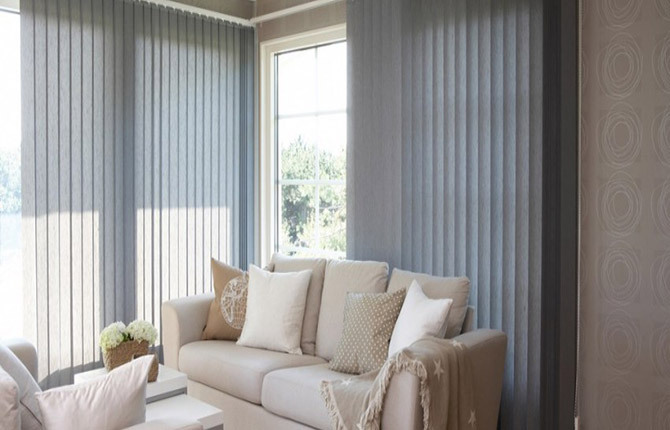
Wooden
For such models, Canadian linden, bamboo, and balsa wood are often used. Natural materials are more expensive, so the price will be high. But the presence of wood in the interior of a house is a sign of taste and high status. In addition, it creates comfort.
Pros:
- They protect the room well from sunlight.
- Eco-friendly.
- Wood gives the room solidity.
- The slats are durable.
- Wooden models are easy to care for. There are devices for cleaning, so you don’t even need to remove them from the window.
Minuses:
- High price.
- High moisture-absorbing properties. The lamellas easily absorb water, swell, deform and eventually collapse.
Manufacturers are constantly creating new models from wood, as the material is popular among consumers.
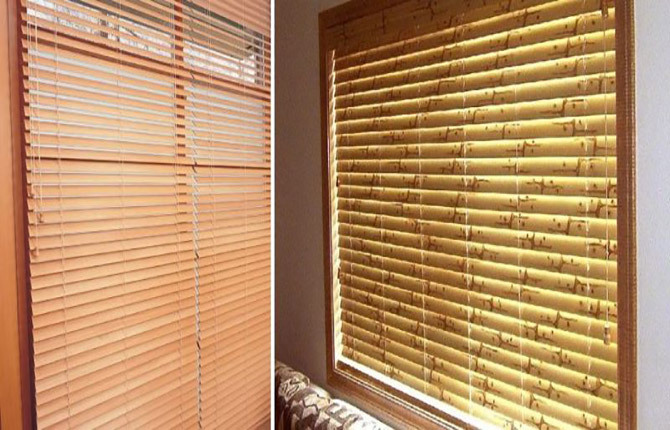
Differences by type of control
There are three options for opening the slats on the blinds:
- Mechanical. The elements are moved by a chain or cord.
- Semi-automatic. The design includes a spring. It is needed to reduce the effort that a person applies when opening/closing the panels.
- Auto. The design includes an electric drive that adjusts the position of the slats. Control - button, remote control. Additional elements - installation, timer, etc.
To remove blinds from windows, you first need to determine the type of structure. The sequence of actions depends on this.
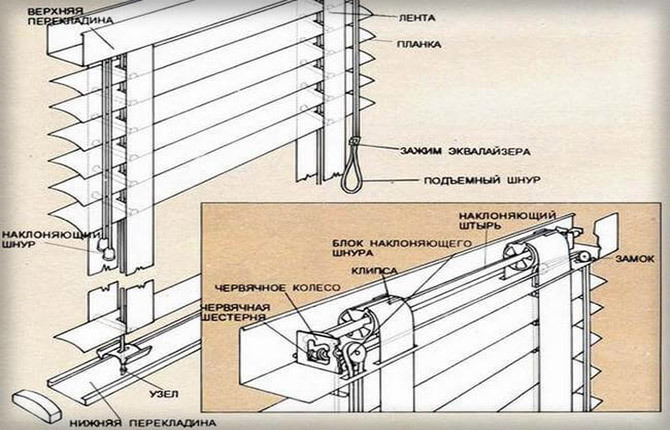
How to remove vertical blinds
Vertical blinds are easy to remove from the window. The structure is secured to a special cornice with hook-runners. Everything is secured on the sides with plugs. This is necessary because the slats should not fall when opening/closing.
Instructions on how to remove vertical fabric strips from a window:
- It is necessary to manually rotate the slats parallel to the window sill. To do this, use a chain or cord. Carefully move the slats to one side to leave the window opening empty.
- Remove the control chain from the bottom of the parts. Do the same with each plank. Twist the cord so it doesn't get tangled. Otherwise, it will be easy to remove the lamellas, but it will be difficult to reinstall them.
- Remove the weight plates. They are placed in a small pocket at the bottom of each fabric strip. Place them in a bag or box so you don't lose them.
- There are plugs on the sides of the cornice in vertical blinds. They also need to be removed.
- Carefully remove each lamella from the plank. To do this, bend the small plastic loop on the slider. But don't use too much force to avoid breaking the part.
- The removed strips are rolled into a roll and secured so that they do not unwind.
To remove metal or plastic slats from a window, they are first unrolled and pushed together to bring them together. They are fastened on both sides so that they do not fall apart. The cornice is dismantled. The brackets are moved first towards you, and then to the right. Otherwise, parts may be irreversibly damaged.
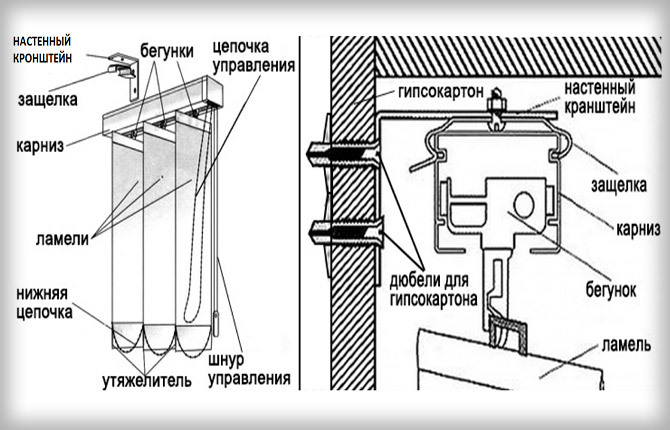
How to remove horizontal blinds
The technique for removing horizontal blinds from a window depends on the type of fastening used in the design.
Instructions for different types of fastening
There are 4 types of fasteners for blinds:
- Mini clamps. Option for small blind models. To remove the strips, carefully move the fastener to the side.
- L-fasteners. The design has 2 clamps that go under the cornice. To remove the structure from the window opening, you need to carefully bend the base wall towards you and hold it with your finger. Only then remove the slats. You can use tools to bend the fasteners. A flathead screwdriver works well.
- Narrow twist holder. The fastening is a screw fastener. It rotates around the bolt. To remove the structure from the window opening, you need to prepare a thin screwdriver. You can first try using your fingers to move the lock from above towards you. If it doesn’t work, take a screwdriver and pry off its lower part. Rotate the lock clockwise.
- Wide twist holder. The design is exactly the same as the narrow twist holder, only the plate is wider. This mount is durable. Proceed exactly as described in point 3 to remove it.
Once the fasteners are removed, you can begin disassembling the blinds themselves.
Instructions on how to remove horizontal blinds from a window:
- Remove the decorative trims from the fasteners.
- The slats were fixed to the horizontal surface of the window opening by brackets. Take them off.
- Lift the upper slats to gain access to the upper latches and release them. Pull slightly towards you and turn clockwise. When doing this, you need to pull the bars down a little while pressing on them. Repeating the steps, remove all slats.
- After removing all the elements, the brackets are fixed in their original position.
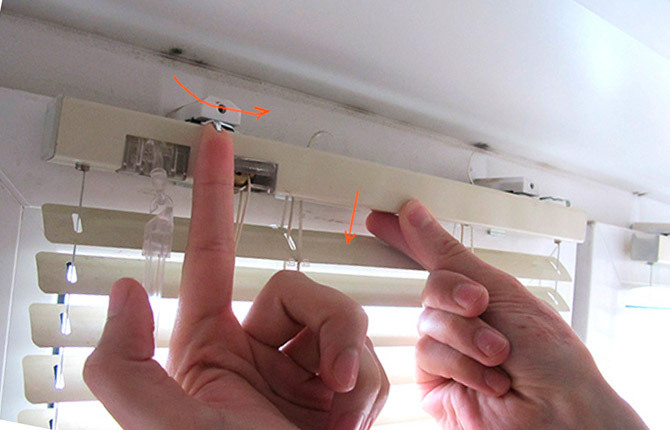
If even according to the instructions it is not possible to remove the blinds from the window, then you need to additionally remove the brackets. In the design they are secured with metal corners fixed with self-tapping screws. You need to take a screwdriver, first unscrew the upper hexagons, and then the lower ones. After this, you can easily remove the fasteners and remove the curtain.
Removing roller blinds
Roller blinds in the window opening are mounted with 3 types of fastenings: self-tapping screws, adhesive tape/magnets, spring bracket. Everything is simple with self-tapping screws - you simply unscrew them with the necessary screwdriver and release the shaft on which the roll sheet is mounted. A magnet is the easiest option - you just need to open the latch. Tape is even easier. It is pryed with a sharp object and removed.
Step-by-step removal instructions
With a spring bracket the situation is more complicated than with magnets or tapes. Therefore, instructions on how to remove roller blinds from a window will be given for this design:
- Roll up the roller blind.
- Remove the decorative trims covering the sides of the cornice.
- Remove gears. They are located on the other side of the chain, on the edge of the shaft.
- Move the cornice from the side of the chain.
- Now you can remove the roller blinds from the shaft.
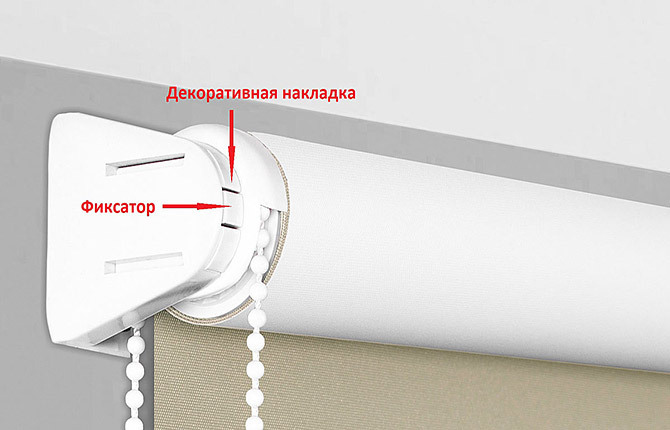
If the blinds need to be removed from the window in order to wash them, and not just rehang or replace them, then the weights/fasteners that help them keep their shape are also removed from the lower part of the blinds.
Removing cassette curtains
Cassette blinds can be classified as roller blinds. But their design is different. It includes a box (cassette). Inside it is a shaft on which the curtain fabric is wound, as well as the control/winding mechanism itself. The position of the blinds is adjusted by a chain or cord.
How to remove cassette blinds from a window:
- The canvas covering the window is rolled into a tight roll. It should fit in the box.
- Decorative overlays from the sides of the cassette are dismantled.
- The box is moved to the side to reveal the interior of the structure.
- Remove the lifting mechanism and the shaft with the panel.
- The owner of the blinds can also remove the fasteners that secure the base by first unscrewing the screws.
If the blind model is small, then attach it to the window with magnets or tapes.
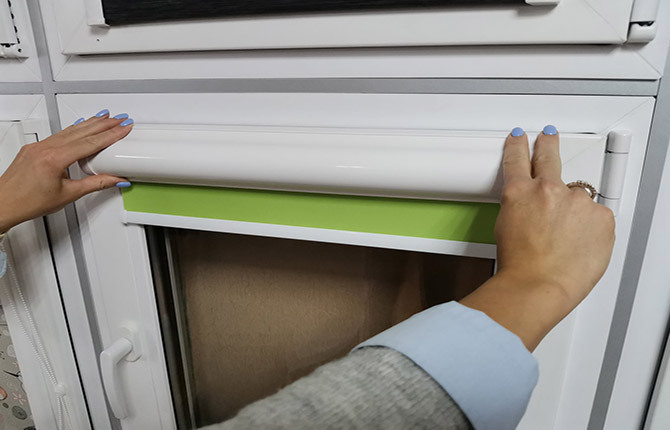
Some useful tips
To avoid damaging the slats, you need to follow a few tips when removing them from the window:
- Fabric canvases are the easiest to work with, as they are difficult to damage. Fabric is a plastic material that does not wrinkle or break. The only way to harm fabrics is to tear them. But this requires effort. In the production of such lamellas, impregnations are used that increase strength.
- The plastic is very fragile, so they work with it carefully; the slats are removed from the window without additional effort. If you overdo it, you can deform their surface or even break it.
- You also need to be careful with aluminum blinds. Remove them from the window carefully, since aluminum is very ductile.It deforms if you apply force. Manufacturers also coat aluminum parts with a polymer coating to improve their aesthetics. It can be easily scratched if the bar is removed carelessly.
- The hardest part is removing the wooden slats from the window.The tree can be broken. It also has high moisture-absorbing properties. If the blinds are not used correctly, they can become deformed and quickly become unusable.
Removing blinds from a window is not difficult, but it is necessary. This is done to clean, wash or replace them. But before you do this, you need to study the type of product, fasteners, and prepare the tools that may be needed. If you still can’t remove the blinds from the window, it’s better not to risk it, because you can damage them, but call a cleaning company.
What type of blinds do you think is easiest to dismantle? Have you tried removing the slats? Share your experience in the comments. Save this article to your bookmarks so that useful instructions are always available.
